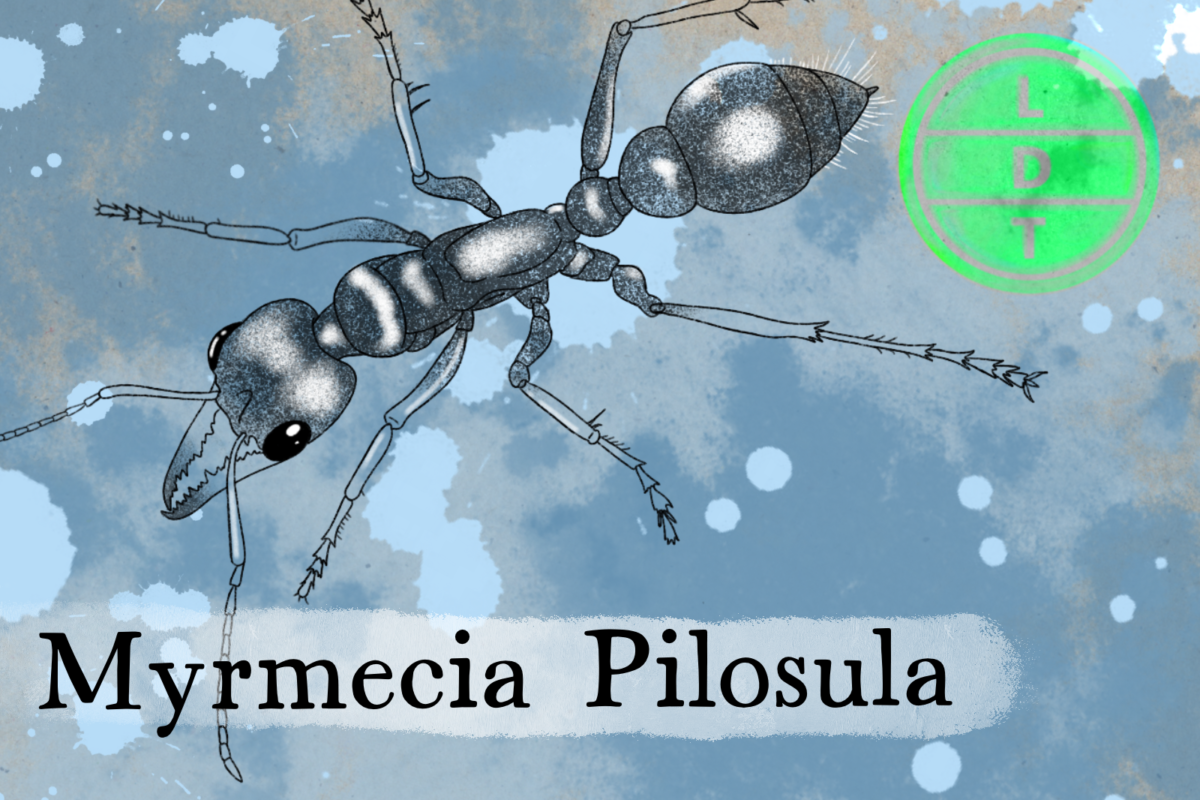“…and today we’re talking about an Olympic-level bug. But more on that later.”
“Jack, be nimble. Jack, be quick. Jack jumps over the candle stick.” Jumping over a whole candle stick might be an easy proposition for a young boy named Jack, but it’s a much different feat for a tiny ant. The Jack jumper is a bounding bug with a little more than a skip in its step to keep it away from predators and to bring it closer to prey. But if you can’t fly, you might as well jump to survive here in Life, Death, and Taxonomy.
Description
- Jack jumpers are black or blackish-red in color and can have yellow or orange legs.
- The antennae, tibiae, tarsi, and mandibles of the ant are also colored yellow or orange.
- They have ashy gray pubescence “hair.”
- Ants have long mandibles and spindly legs for ants.
- They look pretty stinkin’ cool.
Measure Up
Welcome to the beloved Measure Up segment. The official listener’s favorite part of the show! The part of the show when we present the animal’s size and dimension in relatable terms through a quiz that’s fun for the whole family. It’s also the part of the show that’s introduced by you when you send in audio of yourself saying, singing, or chittering the words Measure Up into ldtaxonomy at gmail dot com. We don’t have a new Measure Up intro.
Worker Length
- 12 to 14 mm (0.47 to 0.55 in)
- How many Jack jumper ants go into the highest elevation in FL?
- Hint: Florida’s highest point is in Lakewood Park in Walton County. The point is called Britton Hill, and it’s located just south of the Alabama border.
- 7,527 jack jumper ants. 345 feet above sea level.
Queen Length
- 14 to 16 mm (0.55 to 0.63 in) long
- How many Jack Jumper Ants go into the length of the Regina Trench?
- Hint: The Regina Trench is the Canadian name for a German trench that they captured in the Battle of Somme in the first world war. It was the longest trench system in the Western Front.
- 207,360 ants. The trench was 3 kilometers (1.8 miles)
Fast Facts about the Jack Jumper Ant
Myrmecia pilosula was formally described and named by British entomologist Frederick Smith in 1858. It is commonly found in Tasmania and southeast mainland Australia. Jack Jumpers prefer to live in open habitats such as bushland, woodlands, and dry open forests with gravel and sandy soil where they can nest.
Jack Jumper Predators and Prey
Jack jumper ants use barbless stingers to kill other insects but are also preyed upon by other ants and predatory invertebrates. Despite the gauntlet of dangers a small critter can face, the average worker has a life expectancy of over one year.
Workers are known as gamergates. No, they aren’t arguing about feminism and harassment in the video game industry.
They are workers that can sexually reproduce with drones, whether or not a queen is present in the colony.
Jack Jumper Venom vs. Humans
The ant’s sting usually only causes a mild reaction in humans–like a typical ant sting. However, this species, along with others in the Myrmecia genus, can be dangerous to humans.
Their venom is immunogenic in humans, which means that it has the potential to cause human immune systems to overreact–which means severe allergic reactions. Jack Jumper venom is responsible for about 90% of Australian ant allergies.
In Aussie Jack Jumper territory, around 3% of the population has developed an allergy to its venom. Among these allergic individuals, half can experience anaphylactic reactions, which can lead to death in rare cases.
Around 20 percent of jack jumper ants have an empty venom sac, so if you get stung by one and feel no reaction, it doesn’t mean you aren’t allergic.

